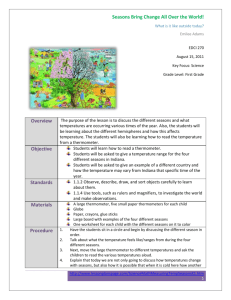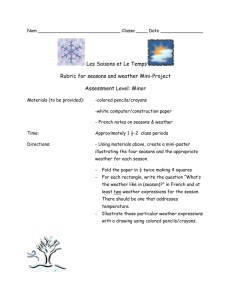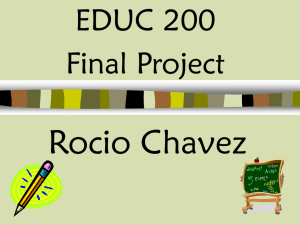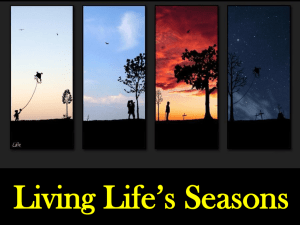Seasons Bring Change All Over the World!
advertisement
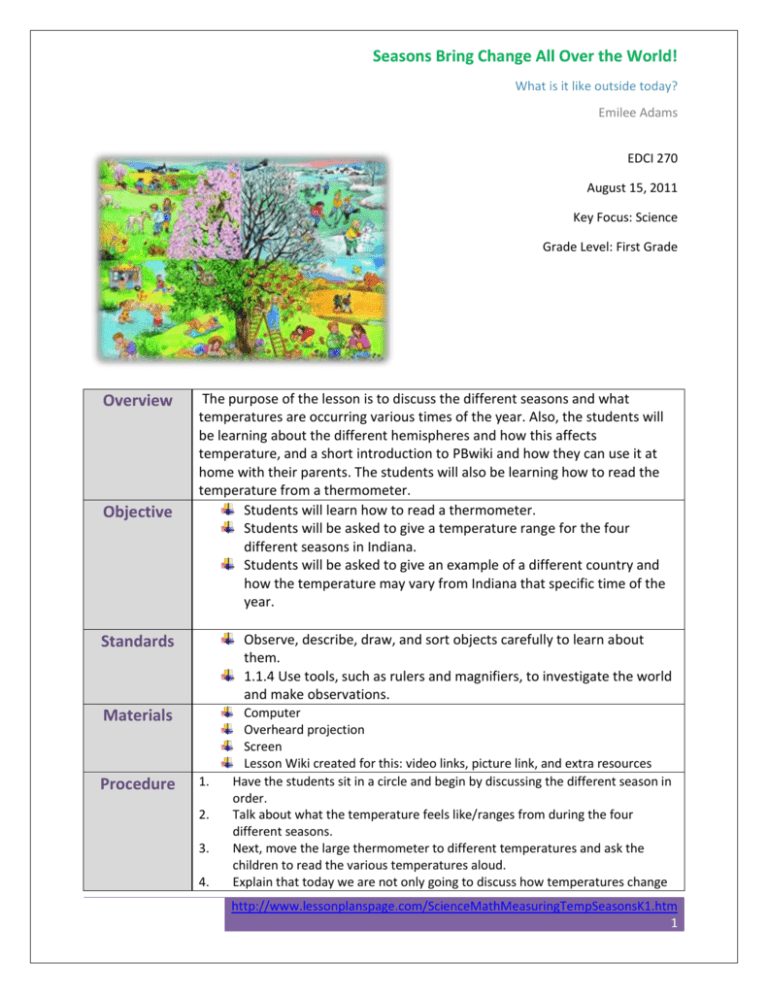
Seasons Bring Change All Over the World! What is it like outside today? Emilee Adams EDCI 270 August 15, 2011 Key Focus: Science Grade Level: First Grade Overview Objective The purpose of the lesson is to discuss the different seasons and what temperatures are occurring various times of the year. Also, the students will be learning about the different hemispheres and how this affects temperature, and a short introduction to PBwiki and how they can use it at home with their parents. The students will also be learning how to read the temperature from a thermometer. Students will learn how to read a thermometer. Students will be asked to give a temperature range for the four different seasons in Indiana. Students will be asked to give an example of a different country and how the temperature may vary from Indiana that specific time of the year. Standards Observe, describe, draw, and sort objects carefully to learn about them. 1.1.4 Use tools, such as rulers and magnifiers, to investigate the world and make observations. Materials Computer Overheard projection Screen Lesson Wiki created for this: video links, picture link, and extra resources Have the students sit in a circle and begin by discussing the different season in order. Talk about what the temperature feels like/ranges from during the four different seasons. Next, move the large thermometer to different temperatures and ask the children to read the various temperatures aloud. Explain that today we are not only going to discuss how temperatures change Procedure 1. 2. 3. 4. http://www.lessonplanspage.com/ScienceMathMeasuringTempSeasonsK1.htm 1 Seasons Bring Change All Over the World! What is it like outside today? Emilee Adams Evaluation with seasons, but also how it is possible that when it is cold here how another part of the world can be warm. 5. Have the children broken off into four groups, have them pick a season’s worksheet and pick up five thermometers each. 6. Each station will be a different season that they color and they will glue their paper thermometer to that season, and then give an example of what the temperature could possibly be during that season by coloring the thermometer. 7. After the children have all rotated through the different seasons/stations, we will come back together as a group and talk about as a class the different hemispheres. 8. Discuss a specific area (ex. Russia and how it is in the Northern Hemisphere, but is the coldest area in the Northern Hemispheres due to the large land mass cooled by arctic air or how Antarctica is in the Southern Hemisphere and nearly permanently frozen under the current climate). 9. Discuss how the equatorial regions get more direct sunlight than the upper latitudes, which have more cloud cover and ice. 10. Discuss specifically with the children the summer season, and how it is possible that one of our warmest months (August) is actually Antarctica’s coldest. 11. Have the children take their last thermometer and draw a very cold temperature and glue it to August and write "Antarctica" so they can see the two extremes. The worksheet completed in class will be graded on accuracy and if the child's temperature range made sense with the season. Also, the thermometer will be checked to evaluate the child's understanding of how to use a thermometer. http://www.lessonplanspage.com/ScienceMathMeasuringTempSeasonsK1.htm 2
